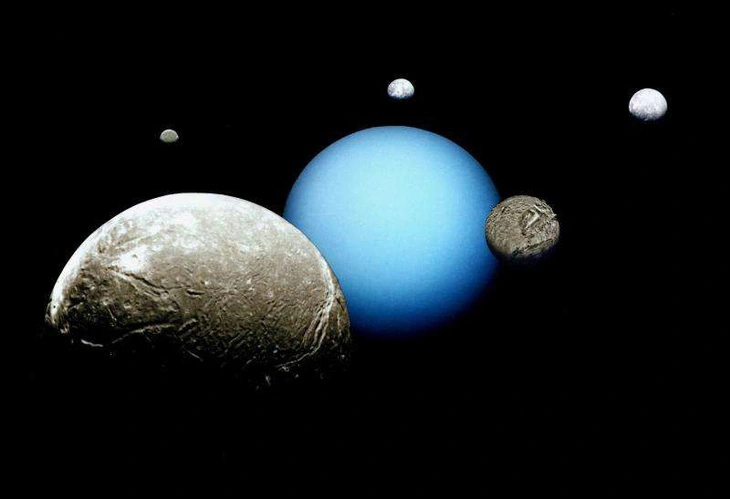In a recent study, NASA’s Jet Propulsion Laboratory (JPL) has reexamined data from the Voyager 2 spacecraft, revealing intriguing possibilities on Uranus’ four moons. The study suggests that Ariel, Umbriel, Titania, and Oberon could harbor vast, kilometers-deep oceans beneath their icy exteriors. This article delves into the findings, the scientific methodologies employed, and the implications for the search for extraterrestrial life.

The Voyager 2 probe, which made historic flybys of Uranus in 1986, holds a treasure trove of data that scientists at NASA’s JPL have revisited for new insights. Their analysis indicates that all four of Uranus’ moons possess the potential for expansive subsurface oceans, creating conditions that could support life, even 2.7 billion kilometers away from Earth.

To arrive at this groundbreaking conclusion, NASA researchers constructed new models by integrating data from ground-based telescopes and combining insights from various space missions, including Galileo, Cassini, Dawn, and New Horizons. These models were crucial in assessing the surface characteristics of Uranus’ moons, leading to the discovery of sufficient internal heat to prevent the subsurface oceans from freezing.

The study also identified potential heat sources within the icy crusts of the moons, releasing warm liquids that could help maintain a conducive environment for subsurface oceans. The researchers highlighted Titania and Oberon as having the most favorable conditions for life formation among Uranus’ moons.
Notably, the oceans beneath the icy surfaces of these moons are believed to be rich in chloride, salts, and ammonia, preventing them from freezing. This composition enhances the potential habitability of these extraterrestrial oceans and opens new avenues for understanding the mechanisms that generate sufficient heat to keep water in liquid form so far from the Sun.
The groundbreaking findings have sparked optimism among scientists, with hopes that this discovery will propel future missions to Uranus’ moons to explore their underwater worlds and search for signs of life. Understanding how these moons generate enough heat to sustain liquid water holds the key to unraveling the mysteries of our solar system.
Julie Castillo-Rogez, the lead author of the study from JPL, expressed the complexities of the mechanisms at play on these moons. She noted that scientists are continually studying the activities on these moons and within our solar system, aiming to comprehend the intricate processes that contribute to the potential habitability of distant celestial bodies.
NASA’s Voyager 2, a pioneer in planetary exploration, continues to yield groundbreaking insights even decades after its historic mission to Uranus. The revelation of potential subsurface oceans on Uranus’ moons redefines our understanding of the conditions necessary for life beyond Earth. As scientific exploration progresses, these findings encourage a renewed focus on the mysteries hidden beneath the icy exteriors of celestial bodies, sparking hope for future missions that may unlock the secrets of distant oceans and the potential for extraterrestrial life within our solar system.

